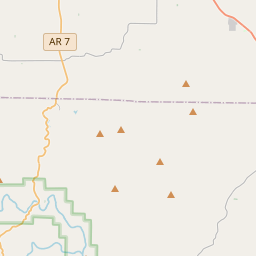Skirmish at Rolling Prairie
Historical marker location:
9708 Rally Hill Road, Everton, Arkansas
( Marker is on Rally Hill Road, 0.1 miles east of Meeks Creek Road South, on the right when traveling east.)
Marker installed: 2012







© OpenStreetMap contributors
More history nearby
The Little Rock Nine were a group of African American students who were the first to integrate Little Rock Central High School in 1957, during the Civil Rights Movement. The event gained national attention and was a pivotal moment in the fight for racial equality.
About Boone County
Boone County Timeline
Boone County, Arkansas has a rich and fascinating history that stretches back to the early 19th century. The area was originally inhabited by Native American tribes, and evidence of their presence can still be found in the numerous burial mounds scattered throughout the region. European settlers began arriving in the 1800s, with the establishment of settlements and the construction of the Old Military Road, which connected southern Missouri to Little Rock, Arkansas.
The county itself was officially established in 1869 and named after Daniel Boone, the famous American frontiersman. During the late 19th century, Boone County experienced significant growth and development due to the booming agricultural industry. Cotton, corn, and livestock farming became the backbone of the local economy, attracting more settlers to the area.
In the early 20th century, Boone County faced challenges brought on by the Great Depression and the decline of the cotton industry. Many residents struggled financially, and the county's population decreased as people sought opportunities elsewhere. However, the construction of the Bull Shoals Dam in the mid-20th century brought new life to Boone County. The dam, completed in 1951, created Bull Shoals Lake, which became a popular tourist destination and provided opportunities for boating, fishing, and recreation. The tourism industry thrived, contributing to the county's economy.
Today, Boone County remains an important center for agriculture and a growing tourist destination. The county's rich history, natural beauty, and vibrant communities attract visitors from all around. The historic towns of Harrison and Bergman offer a glimpse into the past, while the surrounding natural areas, including the Ozark National Forest and the Buffalo River, provide opportunities for outdoor activities and exploration. Despite the challenges faced throughout its history, Boone County continues to evolve and thrive, preserving its heritage while embracing the future.
The county itself was officially established in 1869 and named after Daniel Boone, the famous American frontiersman. During the late 19th century, Boone County experienced significant growth and development due to the booming agricultural industry. Cotton, corn, and livestock farming became the backbone of the local economy, attracting more settlers to the area.
In the early 20th century, Boone County faced challenges brought on by the Great Depression and the decline of the cotton industry. Many residents struggled financially, and the county's population decreased as people sought opportunities elsewhere. However, the construction of the Bull Shoals Dam in the mid-20th century brought new life to Boone County. The dam, completed in 1951, created Bull Shoals Lake, which became a popular tourist destination and provided opportunities for boating, fishing, and recreation. The tourism industry thrived, contributing to the county's economy.
Today, Boone County remains an important center for agriculture and a growing tourist destination. The county's rich history, natural beauty, and vibrant communities attract visitors from all around. The historic towns of Harrison and Bergman offer a glimpse into the past, while the surrounding natural areas, including the Ozark National Forest and the Buffalo River, provide opportunities for outdoor activities and exploration. Despite the challenges faced throughout its history, Boone County continues to evolve and thrive, preserving its heritage while embracing the future.
Boone County Timeline
This timeline provides a condensed summary of the historical journey of Boone County, Arkansas.
- 1869: Boone County is established
- 1874: Harrison becomes the county seat
- 1901: The first railroad reaches Boone County
- 1932: The completion of the Bull Shoals Dam
- 1948: The incorporation of the town of Alpena
- 1957: The establishment of the Arkansas State Park at Bull Shoals-White River
- 1982: The establishment of the Buffalo National River
- 2006: The opening of North Arkansas College in Harrison
- 2011: The reopening of the historic Lyric Theater in Harrison after renovations